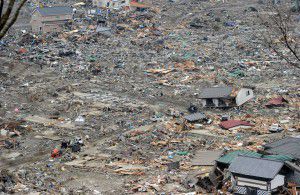Technology and safer cities

Public safety agencies can turn to technology solutions to help communicate, collaborate, and coordinate their resources in an emergency
When a natural disaster strikes, public safety officials face a number of challenges that impact the survival and wellbeing of their citizens. Demands on first-responder services escalate and often, the need for real-time information spikes just as the infrastructure for accessing and sharing it is likely to be damaged and stressed. Technology can help address these challenges by ensuring that public safety and related agencies can communicate, collaborate, and coordinate their resources in an emergency.
Although every situation is unique, large-scale disaster scenarios do often share some similarities that can help us to predict what technology resources will be beneficial should an earthquake, hurricane, tornado, or other disaster strike. The key is preparedness – and one of the best ways public safety officials can prepare is by identifying how technology will support emergency protocols in a few key areas.
Although every situation is unique, large-scale disaster scenarios do often share some similarities that can help us to predict what technology resources will be beneficial should an earthquake, hurricane, tornado, or other disaster strike. The key is preparedness – and one of the best ways public safety officials can prepare is by identifying how technology will support emergency protocols in a few key areas.
Information Sharing
In an emergency, the ability to share information becomes as vital as food, water, and shelter. Rapid access to accurate information not only helps keep people safe, but is also critical to the planning and deployment of emergency management operations. Therefore systems that enable the flow of information become essential. One of Microsoft’s focus areas is working with our partners to bring connectivity to disaster-stricken areas in locations like evacuation shelters, as well as to outlying areas where people may be isolated and need help. During the 2013 Typhoon Haiyan in the Philippines, Microsoft and others collaborated across the technology industry to deploy TV White Space radios to extend Internet connectivity to impacted citizens, and also played a key role in the deployment of three emergency.lu connectivity kits with Skype optimized for low bandwidth enabling communications for 5,000 humanitarian aid workers.
Broadcast Communication
Another challenge is maintaining open communication channels between response organizations and the community. Following the massive earthquake and tsunami that hit Japan in March 2011, causing a dangerous and volatile nuclear crisis, disaster relief teams and government officials needed a way to quickly share basic information with Japanese citizens. In response, Microsoft and others in the technology industry came together to implement cloud solutions to help connect relief organizations, governments, the private sector, and the public during the aftermath. Cloud services, which allow centralized data storage and online access to resources, were used to create websites for disaster relief efforts, including a major government information portal and the MSN East Japan Earthquake Information website, which conveyed crucial news for evacuees and volunteers as well as safety information such as an interactive map of radioactivity levels and planned blackouts.
Social Media
Before, during, and after a disaster, a wealth of information resides within the community itself, and enabling citizens to share event-specific information is a fast way to surface potentially lifesaving information. Informed citizens are not only empowered to be safer from the impacts of disaster, they also become sources of information for others.
A solution we recently created was built upon work done in response to the Boston Marathon bombing in April 2013. Known as the Yammer survivor network, which was announced at a White House-hosted event last summer, the solution aims to establish a support system for survivors as they recover and rebuild. It has been used not only to deal with the trauma of the Boston Marathon bombing, but also to find healthcare providers and keep in contact with others who shared the experience. Some of the injured – including those who lived far away – even used the group to organize trainings to run the marathon the following year.
Working together across the tech industry is key to tackling today’s toughest disaster response challenges, and technology continues to be a key factor in our ability to make communities more resilient in disaster prevention, preparedness, response, and recovery.
Please watch this space for more news and information on these topics. To ask questions or join the conversation follow us on Twitter @MsftResponse or visit www.microsoft.com/disasterresponse.




